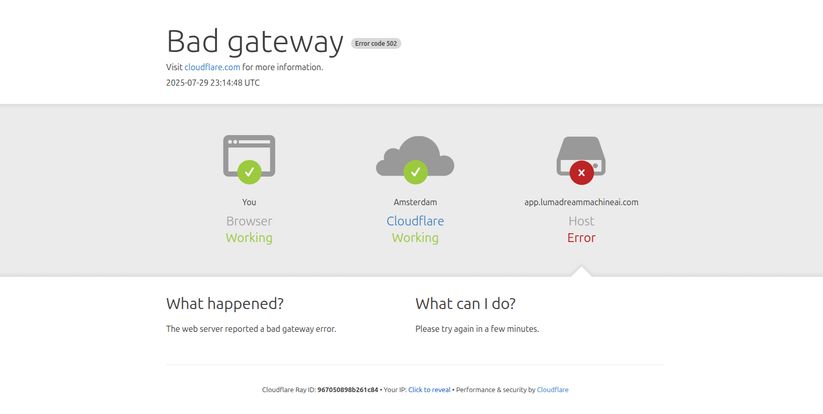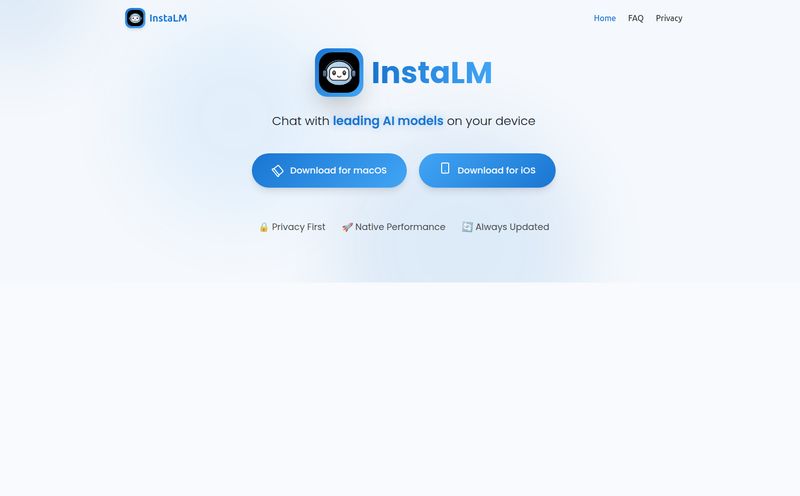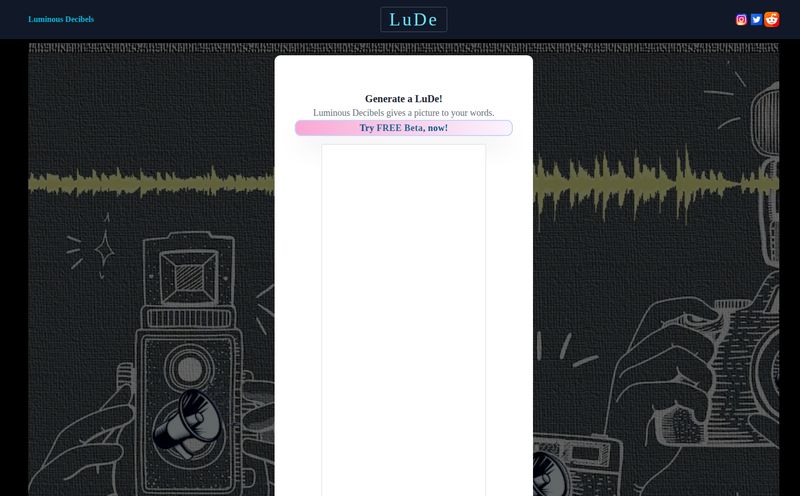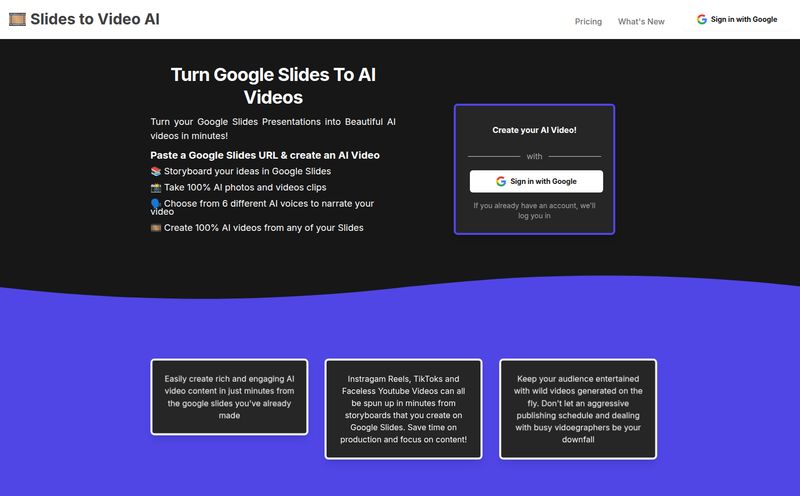If you’ve spent any time in the digital marketing or creative tech space lately, you know the feeling. Another week, another seemingly game-changing AI tool drops, promising to revolutionize… well, everything. The latest shiny object to capture everyone's attention is the Luma AI Dream Machine, a new text-to-video generator that’s been making some serious waves.
How serious? Well, for the first few days after launch, trying to access it felt like trying to get tickets to a Taylor Swift concert. Many of us, myself included, were greeted with the infamous 'Bad Gateway' error. That’s right, the demand was so high it literally knocked its own servers over. If that’s not a sign of hype, I don’t know what is.

Visit Luma AI Dream Machine
But the real question is, once you get past the velvet rope and the server errors, does Dream Machine live up to its name? Or is it just another flash in the pan? As someone who’s been neck-deep in SEO, content creation, and traffic generation for years, I had to find out. So I rolled up my sleeves, waited for the digital dust to settle, and dove in.
What Exactly is Luma AI’s Dream Machine?
Let's get the technical stuff out of the way. Luma AI calls Dream Machine a “highly scalable and efficient transformer model trained directly on videos.” In human terms? It's an AI that learned about the world by watching a metric ton of videos, and now it can create its own short clips based on your text prompts or still images. The goal is to produce physically realistic and consistent video. Think less of those weird, wobbly AI videos from last year and more like something with actual, intentional cinematography.
It’s a direct competitor to the big dogs we’ve been hearing whispers about, like OpenAI's Sora and Kling. The major difference? You can actually use it right now. That, in my book, is a massive win.
The Good, The Bad, and The AI-Generated
No tool is perfect, especially one this new. After playing around with it for a bit, here’s my brutally honest take on what works and what… well, needs work.
The Things I'm Genuinely Excited About
First off, this thing is fast. Luma claims it can generate 120 frames in 120 seconds, and from my tests, that’s not far off. You’re not waiting hours for a result, which is a huge relief for creators on a deadline. The quality is also surprisingly high for a publicly available model. I've seen it produce some genuinely stunning shots with fluid motion and believable physics.
One of its standout features for me is the character consistency. This has been the Achilles' heel of AI video for ages. You’d generate a character, and in the next frame, they’d have three arms or a completely different face. Dream Machine does a much better job of keeping your subjects looking like, well, themselves throughout the clip. You can also feed it a still image and watch it come to life, which opens up amazing possibilities for artists and photographers looking to add motion to their work.
A Few Necessary Reality Checks
Alright, let's not get carried away. The biggest limitation right now is that all videos are capped at 5 seconds. Yep, five. It feels a bit like we’re back in the age of Vine. You can’t create a sweeping narrative, but you can create a collection of stunning shots. It’s a different creative muscle you have to flex, thinking in short, impactful bursts rather than long sequences.
Also, the free plan is quite limited and watermarks your creations. To really get the most out of it and use your videos commercially, you have to pony up for a paid plan. This isn’t a surprise, but it's something to be aware of. The credit system can also feel a bit like an arcade machine constantly asking for more tokens, especially if you're a heavy user.
Let's Talk Money: Breaking Down Luma AI's Pricing
This is where things get interesting. Luma has structured its pricing into several tiers, available on both their web platform and an iOS app. It can be a little confusing, so let's lay it out simply.
The whole system runs on 'Credits'. Generating stuff costs credits, and different plans give you a different monthly allowance.
| Plan | Price per Month | Key Features |
|---|---|---|
| Free | $0 | 30 monthly generations. Non-commercial use, watermark, lower priority. A good way to test the waters. |
| Lite | $9.99 | 3,200 credits. High-priority processing but still watermarked and for non-commercial use. |
| Plus | $29.99 | 10,000 credits. This is the sweet spot for many. Commercial use is allowed, and no watermarks! |
| Unlimited | $94.99 | 10,000 'fast' credits + unlimited 'relaxed' generations. For power users and agencies. |
Note: The iOS plans are similar but may have slight variations. Always check their official pricing page for the most current info.
The jump to the $29.99 Plus plan seems like the most logical step for any serious creator or business. Getting rid of the watermark and gaining commercial rights is, for me, a non-negotiable for professional work.
My Final Take: Is Dream Machine Worth the Hype?
So, what’s the verdict? I’m cautiously optimistic. Luma AI’s Dream Machine is not the mythical, all-powerful AI video tool that will replace entire production studios overnight. Not yet, anyway.
But it is an incredibly powerful and accessible tool for creating high-quality, short-form video content. It's perfect for generating eye-catching social media posts, animated ad creatives, b-roll footage for a blog post, or simply visualizing an idea in your head. The 5-second limit forces a certain kind of creativity, and I've already seen people on X (formerly Twitter) doing amazing things with it.
If you're a content creator, a social media manager, or a small business owner, I absolutely think it's worth signing up for the free plan and giving it a spin. You might find it’s the perfect tool for adding a little extra visual flair to your projects. For larger-scale productions, it’s still more of a cool toy than a primary tool, but teh technology is moving so fast that my opinion on that might change by next month.
Frequently Asked Questions about Luma AI
What is the maximum length of a video from Dream Machine?
Currently, all video generations are capped at 5 seconds long. There has been no official word on when or if this limit will be extended.
Can I use videos from Luma AI for commercial purposes?
Yes, but only on the paid plans starting from the 'Plus' tier ($29.99/month). The Free and Lite plans are for non-commercial use only and include a watermark.
Does Luma AI Dream Machine generate audio too?
As of its initial launch, Dream Machine does not generate audio or sound effects with its videos. You would need to add sound in a separate video editing program.
What's the difference between 'fast' and 'relaxed' generation on the Unlimited plan?
'Fast' generations use your monthly priority credits for quicker results. 'Relaxed' generations are unlimited but are processed at a lower priority, meaning they might take longer to generate, especially during peak times.
How good is the character consistency?
It's one of the best I've seen in a publicly available tool. While not 100% perfect every single time, it does a remarkable job of maintaining a character's appearance and features throughout the 5-second clip, which is a significant step forward for AI video.
Is there an API available for Luma AI Dream Machine?
Yes, Luma AI provides an API for developers to integrate Dream Machine into their own applications. This is typically part of their enterprise-level offerings.
Conclusion
Luma AI's Dream Machine has successfully crashed its own party, and for good reason. It’s a powerful, fast, and accessible entry into the world of high-quality AI video generation. While the 5-second clip limit is a significant constraint, it doesn't nullify its usefulness for a wide range of creative applications. This isn't just another tool; it's a very real and usable glimpse into the immediate future of digital content creation. And I, for one, am excited to see where it goes from here.
Reference and Sources
- Luma AI Official Website: https://lumalabs.ai/
- Dream Machine Pricing Page: https://lumalabs.ai/dream-machine/pricing



